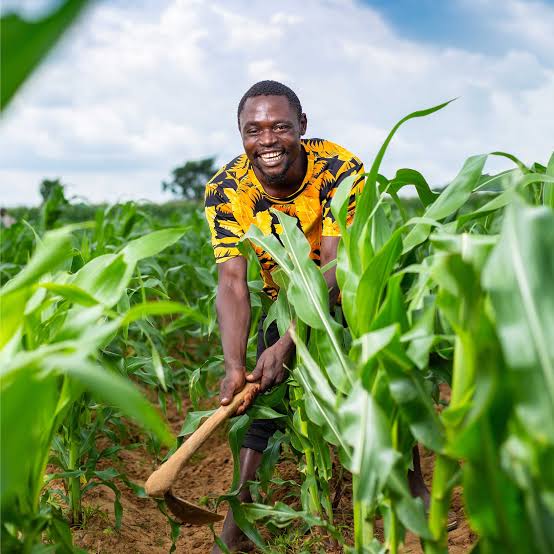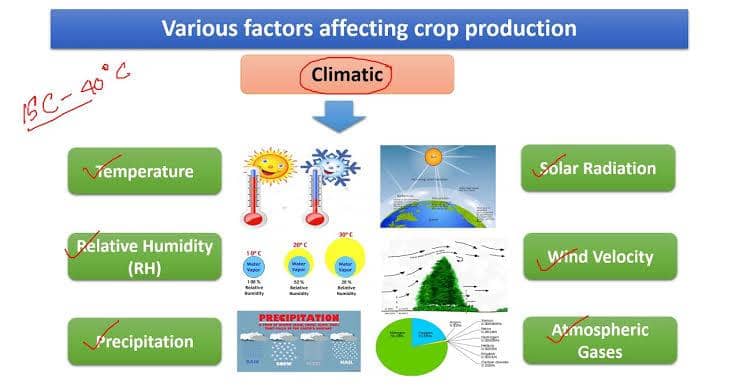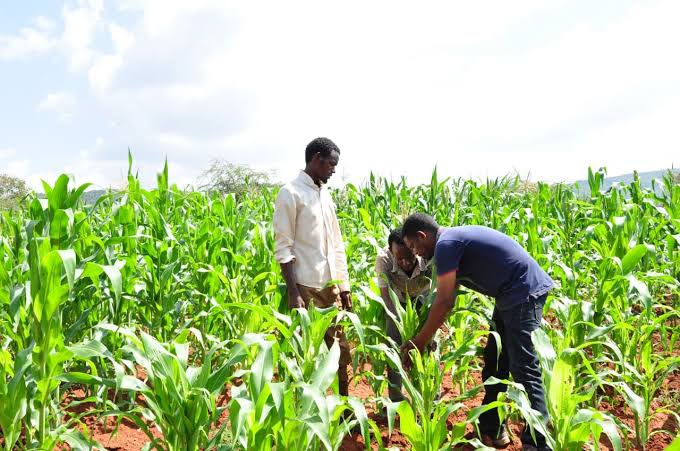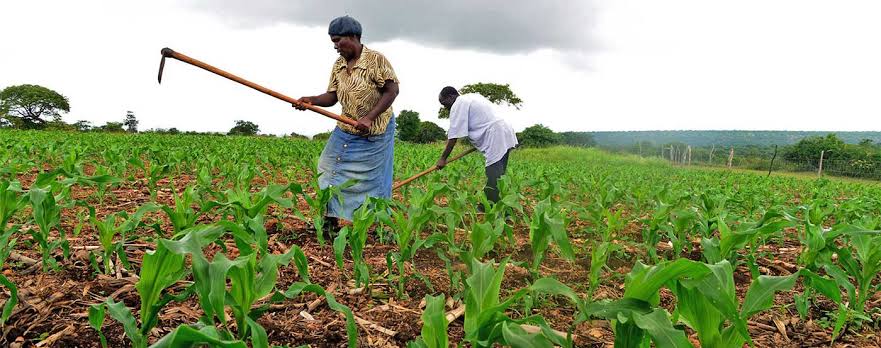The history of agriculture, particularly crop production, is a story of human innovation and adaptation. It spans thousands of years, beginning when humans first transitioned from a nomadic lifestyle of hunting and gathering to settling in communities and cultivating the land.
This shift not only transformed the way people lived but also laid the foundation for the development of societies, economies, and civilizations. The origins of crop cultivation are traced back to the Fertile Crescent, an area in the Middle East that is often referred to as the “Cradle of Civilization.”
Archaeological evidence suggests that around 10,000 years ago, early humans in this region began experimenting with growing wheat, barley, lentils, and other plants. Instead of relying solely on what nature provided, they started to manipulate the environment by planting seeds, watering plants, and protecting crops from pests.
This new way of producing food allowed populations to settle in one place, leading to the development of permanent villages. As these early agricultural communities grew, so did the knowledge of farming. People began to understand the seasons and how they affected planting and harvesting.
They discovered which plants thrived in certain climates and how to selectively breed plants to improve yield and quality. The domestication of animals also played a crucial role in the development of agriculture, as animals were used to plow fields, transport goods, and provide manure for fertilizing crops.
In ancient Egypt, the Nile River was central to agricultural development. The annual flooding of the Nile deposited rich silt onto the land, creating fertile soil ideal for farming. The Egyptians developed sophisticated irrigation systems to control the floodwaters and extend their farming seasons, allowing them to grow crops such as wheat, barley, flax, and papyrus.
Agriculture was so integral to Egyptian society that it influenced their religious beliefs, with gods and goddesses associated with fertility, harvest, and the Nile itself. In the Americas, indigenous civilizations such as the Maya, Aztec, and Inca also developed advanced agricultural systems.
The Mayans cultivated maize, beans, and squash, known as the “Three Sisters,” which were complementary crops that supported one another’s growth. The Incas in the Andes Mountains practiced terrace farming, a method that allowed them to grow crops on steep mountain slopes, maximizing land use and managing water resources.
The development of agriculture in these societies contributed to their economic and cultural growth, supporting large populations and sophisticated urban centers. With the rise of the Roman Empire, agriculture became even more advanced and widespread.
The Romans introduced innovations such as crop rotation, irrigation systems, and the use of manure to improve soil fertility. They also developed large estates, or latifundia, where slaves were used to work the land and produce food for the empire.
The Roman emphasis on farming techniques, along with their vast network of roads and trade routes, helped spread agricultural knowledge across Europe and the Mediterranean.
The Middle Ages saw a continuation of agricultural development, particularly in Europe. The feudal system was largely based on farming, with peasants working the land for their lords in exchange for protection.
During this period, a major innovation was the three-field system, where land was divided into three parts: one for winter crops, one for spring crops, and one left fallow to recover. This system allowed for more efficient use of land and increased food production, leading to population growth.
The agricultural revolution of the 18th century marked a turning point in the history of farming. This period saw the introduction of new tools, techniques, and crops that dramatically increased food production.
The seed drill, invented by Jethro Tull, allowed farmers to plant seeds in rows at the correct depth and spacing, improving germination rates and crop yields. The enclosure movement in England also played a significant role, as common land was consolidated into private farms, leading to more efficient farming practices.
Selective breeding of livestock and the introduction of new crops, such as the potato, further boosted agricultural productivity. The industrial revolution in the 19th century brought even more changes to agriculture.
The invention of machines such as the mechanical reaper, combine harvester, and tractor revolutionized farming, making it more efficient and less labor-intensive. These machines allowed farmers to cultivate larger areas of land and produce more food with fewer workers.
At the same time, the development of chemical fertilizers and pesticides helped increase crop yields and protect against pests and diseases. However, these innovations also had environmental consequences, leading to soil degradation and pollution in some areas.
In the 20th century, the Green Revolution transformed agriculture once again. Beginning in the 1940s, scientists developed new high-yielding varieties of crops such as wheat and rice, which were resistant to pests and diseases.
These crops, combined with the use of synthetic fertilizers, irrigation, and modern machinery, helped dramatically increase food production, particularly in developing countries.
The Green Revolution is credited with preventing widespread famine in regions such as Asia and Latin America, but it also led to concerns about the long-term sustainability of intensive farming practices.
Today, agriculture continues to evolve in response to new challenges and opportunities. Climate change, population growth, and resource depletion are driving the development of more sustainable farming practices.
Organic farming, agroecology, and regenerative agriculture are gaining popularity as methods that prioritize soil health, biodiversity, and ecological balance. Advances in technology, such as precision farming and biotechnology, are also shaping the future of agriculture.
Farmers can now use GPS, drones, and data analytics to optimize crop production and reduce waste, while genetically modified crops offer the potential for higher yields and greater resilience to environmental stressors.
Read Also: Methods and Importance of Farming Systems
Cultural Practices and Their Impact on Crop Production

Cultural practices in agriculture refer to the various methods and techniques farmers use to manage crops and improve growth. These practices impact crop production significantly and are influenced by environmental conditions, traditions, and technological advancements. The way crops are managed has a direct effect on yield, quality, and sustainability. Below are key cultural practices that play a critical role in crop production:
1. Land Preparation: Land preparation is crucial to successful crop production. Traditionally, this involves clearing and tilling the land, making it ready for planting. While tilling can break up the soil and allow seeds to establish roots, excessive tilling can cause soil erosion and nutrient loss. Today, farmers adopt conservation tillage or no-till methods to:
- Preserve soil structure
- Prevent erosion
- Enhance water retention
These modern practices contribute to more sustainable crop production by maintaining healthier soil conditions.
2. Crop Rotation: Crop rotation involves planting different crops in the same field over successive seasons. This practice offers several benefits:
- Maintains soil fertility
- Reduces pests and diseases
- Replenishes soil nutrients
Legumes like beans and peas, for example, fix nitrogen in the soil, improving its fertility for future crops. Crop rotation also minimizes the need for chemical fertilizers, supporting environmentally friendly crop production.
3. Intercropping: Intercropping is the practice of growing two or more crops together in the same field. This strategy helps farmers maximize space and resources by:
- Reducing competition for nutrients between plants
- Providing natural pest control
- Enhancing biodiversity
For instance, deep-rooted crops like maize can be intercropped with shallow-rooted vegetables, ensuring both crops thrive. Intercropping also boosts crop production by creating a more diverse ecosystem that supports healthy growth.
4. Timing of Planting: Planting crops at the right time is critical for high yields. Farmers must account for:
- Local climate
- Soil conditions
- Crop-specific needs
Planting too early or too late can expose crops to unfavorable weather, such as frost, drought, or heat. Modern farmers use weather forecasting and climate data to plan optimal planting times, which has a direct effect on crop production by ensuring crops receive the best growing conditions.
5. Weed Management: Weeds compete with crops for water, nutrients, and sunlight, making weed control essential for maximizing crop production. Traditional methods include manual weeding, while modern agriculture often relies on herbicides. However, excessive use of chemicals can lead to environmental issues like:
- Soil degradation
- Water pollution
- Herbicide-resistant weeds
Integrated Weed Management (IWM) is a sustainable approach that combines mechanical weeding, mulching, and crop rotation to control weeds effectively, supporting long-term crop production.
6. Irrigation Management: Irrigation plays a vital role in areas where rainfall is insufficient or unpredictable. Traditional methods like flood irrigation can be inefficient, leading to water wastage. Modern techniques, such as:
- Drip irrigation
- Sprinkler systems
These systems deliver water directly to the plant roots, reducing evaporation and runoff, and are crucial for conserving water while improving crop production.
7. Fertilization Practices: Fertilizers are essential for maintaining soil fertility and promoting healthy crop growth. Traditionally, organic fertilizers like manure and compost have been used to enrich soil. However, modern crop production often relies on synthetic fertilizers due to their concentrated nutrient content. While they can boost productivity, overuse can lead to:
- Soil nutrient imbalances
- Water pollution from runoff
Sustainable farming now emphasizes organic fertilizers and balanced fertilization methods that meet crop needs without harming the environment.
8. Pest and Disease Management: Managing pests and diseases is crucial for successful crop production. Traditionally, farmers used natural methods like resistant crop varieties or ash to protect crops. Today, chemical pesticides are widely used but can lead to:
- Environmental contamination
- Health risks to farmworkers
- Pesticide-resistant pests
Integrated Pest Management (IPM) combines biological, cultural, and chemical methods to control pests in an environmentally friendly way. IPM promotes healthier plants and better crop production by minimizing reliance on harmful chemicals.
9. Harvesting Practices: The timing and method of harvesting can significantly affect crop production. Traditional methods often involve manual harvesting, which allows for careful handling but can be labor-intensive. Mechanical harvesters are used in modern agriculture to save time, though improper use can damage crops. Post-harvest handling, such as:
- Drying
- Cleaning
- Proper storage
These practices are essential for preserving crop quality and ensuring maximum yields.
10. Post-Harvest Management: After harvesting, maintaining crop quality is key. Post-harvest techniques like drying, storage, and cleaning help prevent spoilage and maintain the nutritional value of crops. Effective post-harvest management helps preserve crop production gains by reducing losses.
Read Also: Health Benefits of Pounded Yam
Climatic Factors Influencing the History of Crop Production

The history of crop production has been deeply intertwined with climatic factors that have shaped agricultural practices, crop yields, and food security over centuries. From the early days of farming to modern agriculture, climate has played a crucial role in determining where, when, and how crops can be grown.
Changes in temperature, rainfall patterns, and seasonal variations have all impacted crop production, and understanding these climatic influences is essential for sustainable farming practices today.
1. Temperature: Temperature is one of the most critical factors affecting crop production. Each crop has an optimal temperature range within which it grows best. Extreme temperatures, either too hot or too cold, can damage crops or stunt their growth.
Historically, the development of agriculture in regions like the Fertile Crescent was heavily influenced by favorable temperatures that allowed early crops such as wheat and barley to thrive.
As humans migrated and agriculture spread to different parts of the world, temperature became a determining factor in selecting suitable crops for different regions. For instance, tropical crops like rice and maize developed in warm climates, while temperate crops such as wheat and oats were cultivated in cooler areas.
The rise of industrial agriculture in the 20th century introduced methods to control temperature, such as greenhouses and heat-resistant crop varieties, which expanded the possibilities of crop production in diverse climates.
However, temperature fluctuations caused by climate change now pose significant challenges, as rising global temperatures affect the timing of planting seasons and reduce yields of temperature-sensitive crops.
2. Rainfall and Water Availability: Water is essential for crop production, and rainfall patterns have historically determined the success or failure of agricultural systems. In regions with consistent rainfall, such as parts of Southeast Asia, rice farming flourished because of the availability of water.
Conversely, arid regions, like parts of North Africa, had to rely on irrigation to sustain crop production. Over time, civilizations developed sophisticated irrigation systems to transport water from rivers and lakes to their fields, which helped mitigate the impact of droughts and dry seasons. Rainfall variability can have a dramatic impact on crop production.
Too much rain can lead to flooding, which can drown crops and wash away fertile topsoil, while too little rain can cause droughts, leading to crop failure. In ancient civilizations, shifts in rainfall patterns often led to the rise or fall of entire empires, as agricultural productivity was linked to food supply and societal stability.
Today, modern irrigation techniques and water management strategies help farmers adapt to unpredictable rainfall, but water scarcity remains a pressing concern in many parts of the world, exacerbated by climate change.
3. Seasonal Variability: The history of crop production is closely tied to seasonal variability, with the changing of seasons influencing planting and harvesting cycles. In regions with distinct seasons, such as Europe and North America, farmers have long relied on predictable seasonal changes to guide their agricultural practices.
Crops that require cooler temperatures are planted in the fall or early spring, while warm-season crops are grown in the summer. In tropical regions with less pronounced seasons, the rainy and dry seasons dictate planting schedules.
Crops such as cassava and sweet potatoes, which are more drought-resistant, are often grown in the dry season, while water-dependent crops like rice are planted during the rainy season. Seasonal variability affects not only the timing of crop production but also the types of crops that can be successfully grown in different regions.
In modern times, advances in technology have enabled farmers to extend growing seasons through the use of greenhouses, irrigation, and climate-controlled environments, but the seasonal cycle remains a fundamental aspect of crop production.
4. Soil Conditions and Fertility: While not a climatic factor in itself, soil conditions are directly influenced by climate, particularly rainfall and temperature. The health and fertility of the soil are critical for successful crop production. In regions with heavy rainfall, nutrients in the soil can be leached away, making it difficult to maintain fertile farmland.
Conversely, dry climates can lead to the accumulation of salts in the soil, which can hinder crop growth. The development of crop production over time has been shaped by farmers’ ability to manage soil conditions.
Practices such as crop rotation, the use of organic fertilizers, and soil conservation techniques have evolved in response to climatic challenges. In ancient Mesopotamia, for example, irrigation brought water to fields, but over time it also led to the salinization of the soil, which eventually reduced crop yields.
Today, sustainable farming practices aim to maintain soil health in the face of climatic pressures, ensuring that crop production can continue without degrading the land.
5. Wind Patterns: Wind can have both positive and negative effects on crop production. Historically, strong winds have been known to cause physical damage to crops, especially in open fields. Winds can uproot plants, strip away leaves, and even erode the soil, reducing its fertility.
In some regions, farmers have developed windbreaks—rows of trees or other barriers—to protect crops from strong winds. Wind also plays a role in pollination for certain crops, such as maize and wheat, where the movement of pollen by wind is necessary for reproduction. However, wind can also aid in the spread of pests and diseases, which can devastate crops.
In regions where dry, hot winds are common, such as the Sahel region of Africa, crops can quickly wilt and die if exposed to prolonged wind exposure. On the other hand, in coastal areas, winds can bring cooler air and moisture, which can be beneficial for crops that require moderate temperatures.
Managing wind patterns has been a constant challenge throughout the history of crop production, and modern technology now offers solutions like protective coverings and advanced windbreak systems.
6. Climate Change and Its Impacts: In recent decades, climate change has emerged as one of the most significant factors influencing crop production. The rapid changes in global temperatures, shifts in precipitation patterns, and increasing frequency of extreme weather events, such as floods, droughts, and storms, have made traditional agricultural practices less reliable.
Farmers around the world are now facing the challenge of adapting to these changes while maintaining food security and crop productivity. The impact of climate change on crop production can already be seen in the shifting distribution of crops.
For instance, crops that were once limited to temperate regions are now being grown in more northern latitudes due to warming temperatures. However, some regions, especially in the tropics, are becoming less suitable for certain crops because of rising heat and unpredictable rainfall.
Researchers and farmers are working together to develop climate-resilient crops and adopt new agricultural techniques to cope with these challenges, ensuring that crop production can continue in a changing climate.
7. Pest and Disease Outbreaks: Climatic factors, especially temperature and humidity, play a significant role in the prevalence of pests and diseases that affect crop production. Warmer temperatures and increased rainfall can create favorable conditions for pests such as locusts, aphids, and caterpillars, as well as diseases like blight and mildew.
These outbreaks can have devastating effects on crop yields and have historically led to famines and economic crises. For example, the Irish Potato Famine in the 19th century was largely caused by a potato blight that thrived in the cool, damp conditions of Ireland’s climate.
In modern agriculture, the use of pesticides and improved crop varieties has helped mitigate the impact of pests and diseases, but climate change continues to introduce new challenges. As temperatures rise, pests and diseases that were once confined to specific regions are expanding into new areas, threatening crop production on a global scale.
Frequently Asked Questions on the Historical Development of Crop Production

1. When did crop production first begin?
Crop production began around 10,000 to 12,000 years ago during the Neolithic Revolution, when humans transitioned from a hunter-gatherer lifestyle to settled agriculture. Early civilizations in regions like the Fertile Crescent, the Nile Valley, and the Indus Valley started cultivating crops such as wheat, barley, and rice, laying the foundation for modern agriculture.
2. How did early civilizations influence crop production?
Early civilizations significantly influenced crop production by developing irrigation systems, improving farming techniques, and domesticating plant species. Ancient Egyptians, for example, built irrigation channels from the Nile to water their crops, while the Mesopotamians advanced soil management. These innovations improved agricultural yields and allowed societies to grow and thrive.
3. What role did climate play in the development of crop production?
Climate has always played a crucial role in crop production. Early farmers selected crops based on the local climate, choosing plants that could thrive in their region’s temperature and rainfall patterns. Climate changes over millennia have also led to shifts in crop production practices, such as the development of drought-resistant varieties in arid regions.
4. How did technological advancements change crop production?
Technological advancements, from the invention of the plow to modern machinery, have dramatically changed crop production. The Industrial Revolution introduced mechanized tools, such as tractors and harvesters, which increased efficiency and reduced labor. Recent advances in biotechnology and precision farming have further transformed agriculture, improving productivity and sustainability.
5. What impact did colonization have on crop production?
Colonization played a major role in the spread of crop production across the globe. European explorers introduced crops like maize, potatoes, and tomatoes from the Americas to Europe, Africa, and Asia, altering global diets and agricultural practices. Similarly, crops like wheat and sugarcane were spread to the Americas and other colonies, transforming local economies and farming systems.
6. How has modern crop production evolved to address environmental concerns?
Modern crop production has evolved to address environmental concerns through sustainable farming practices. Techniques such as crop rotation, conservation tillage, organic farming, and the development of climate-resilient crops aim to reduce environmental impact. These practices are essential in mitigating the effects of climate change, soil degradation, and water scarcity while ensuring long-term agricultural productivity.
Read Also: How to Make Homemade Pasta
Do you have any questions, suggestions, or contributions? If so, please feel free to use the comment box below to share your thoughts. We also encourage you to kindly share this information with others who might benefit from it. Since we can’t reach everyone at once, we truly appreciate your help in spreading the word. Thank you so much for your support and for sharing!






